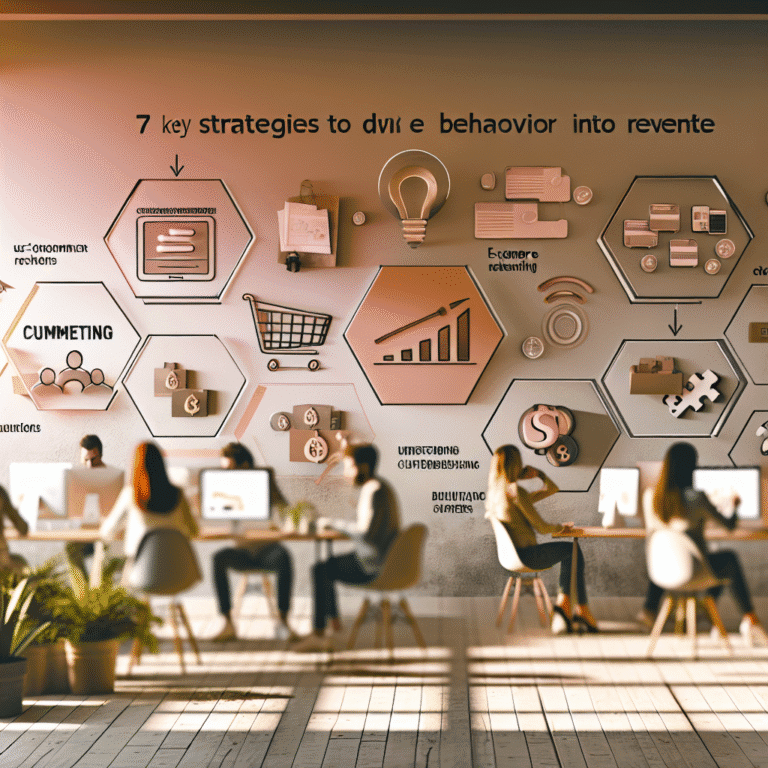How Data-Driven Stories Sell Online
If online shopping had a language, it'd speak in stories backed by data. Imagine combining emotions with cold facts — it's essential if you're tired of watching shoppers vanish like that dodgy Tinder date who promised to call.
You've tried it all — the promos, the endless CTA button tweaks, the product description rewrites. Still, conversions are about as predictable as a squirrel in rush-hour traffic.
The problem's not you — it's how you're going about it. Most ecommerce content is speaking to nobody in particular. It may look good and even make some sense, but it hardly touches the heartstrings. It's "on brand" but emotionally tone-deaf. When your story lacks grounding, customers disappear without a whisper.
Enter data-driven storytelling. It isn't some empty buzzword; it's the CPR your content needs. By shaping emotional connections through what the data actually tells you, your stories shift from boring to brilliant.
Let's unpack how data can turn your ecommerce offerings into compelling tales that really sell, no fortune-telling required.
Why Stories in Shopping Need a Data Makeover
Everyone chats about brand storytelling. But in online content, many tales are flimsy, without direction—puffy backstories or sonnets to exotic beans.
Ask, “How does this help someone buying?” and you might get nervous coughs.
Here are the usual storytelling slip-ups:
- Messages made on a whim, not data
- Content for everyone, which means no one
- Emotional pitches that miss the mark
Result? Looks good on paper, but won't budge the sales needle.
Effective storytelling isn't just vibes; it's verified. Emotion backed by insight. Messages built on metrics.
What Is Data-Driven Storytelling and Why It Sells
Data-driven storytelling is about shaping content with customer data to create something that resonates and converts. It's not about ditching feelings entirely — it's about targeting them precisely.
It pairs the art of storytelling with numbers from your online shop:
- Behavioural hints: what parts of the page grip attention
- Buying data: history, frequency, habits
- Customer feedback: chats, reviews
- Clever segmentation: recognising how different shoppers behave
When you apply this, you move from guesswork to certainty. You won’t need a crystal ball when you know what catches eyes and seals the deal.
It works because it stops you from guessing. It makes your message relevant and emotional by choice, not chance.
Picture your online content like a good stand-up comic. Data-driven brands nail the punchlines at just the right moment for the perfect audience.
The 5 Parts of Storytelling that Sells Online
Your Customer's the Star
Rule one: You're not the hero. Your product? That's just the sidekick, like Alfred to Batman.
Use data to get a real sense of who your customer is:
- What keeps them up at night?
- What's tricky in reviews?
- Where do they drop off?
Forget finding your unique selling point in brainstorming sessions. It's in your buyer's gripes.
Get Specific with the Problem
Vague problems lead to vague solutions. If nearly half your returns come from size confusion, that's emotional gold, not a logistical pain.
Dig into customer feedback to spot issues:
- Confusing sizes?
- Shipping woes?
- Misleading expectations?
Turn these pains into persuasion. Your content should scream, "We get it, and we've fixed it."
Blend Emotion with Logic
People buy on feelings but justify with logic. Especially online, where choices are everywhere and patience is scarce.
Mix stories with stats:
- Start with a relatable customer moment
- Back it up with data: reviews, points, proof
- Mirror their doubts and turn them to trust
It's not about stacking testimonials; it's about converting hesitation into belief.
Sell the Change
People don't buy moisturiser; they buy clear skin and compliments. They don't want a water bottle; they want hydration without spills.
Show your customer’s change:
- Before: mess, knowing there's a need
- After: solved life, made simple
- During: just a few easy steps
Real transformation builds trust—and trust buys the goods.
Let Data Write the Story
Stop treating data like an afterthought. Let it guide you:
- Use patterns to highlight where the content shines
- Inject customer sentiment into product descriptions
- Test email messages and timing, based on what worked before
Make every story feel like it just clicks—because it does.
10 Simple Ways to Use Ecommerce Data
You don't need fancy tools to start. Authentic, engaging content begins with genuine curiosity about your customer.
Try these:
- Post-purchase surveys: ask about their buying experience
- Heatmaps: see what draws attention or gets ignored
- Cart reminders: don't nag—ask why they paused
- Exit pop-ups: grab their thoughts before they leave
- Review trawling: see the emotional language
- Chat transcripts: find hidden product questions
- A/B testing: keep what works, chuck the rest
- Watch social: what’s the buzz about price, delivery, quality?
- Support logs: repeated moans are content gold
- Loyalty data: what turns a buyer into a fan?
Use it to tweak what needs tweaking:
- Home page words
- Ads
- Emails
- Product pages
You want stories that don't just read nice — they convert.
A Real World Success: Bombas
Take Bombas. They sell socks but with a clever twist.
Their data revealed repeat buyers were abuzz about “giving back.” They reframed their story. Instead of waffling about arch support, they led with emotion: buy a pair, donate a pair.
But this new angle came from data, not guesswork.
And the result? A whopping $100 million in revenue. Empathy, backed by data. Content that didn't just sound good. It sold socks like hotcakes.
Starting with Data-Driven Stories
You don't need flashy budgets to start smart storytelling. Just look at what you've got.
Begin here:
- Peek at your top landing page. Telling a story, or listing features?
- Grab 5 honest reviews. Spot emotional language.
- Check your best email. What headline hooked the readers?
Then test it out:
- Swap a dull product blurb with something real and relatable
- Rethink a promo email with a customer problem at the heart
- Use heatmap results to move your CTAs
The trick isn’t in faking emotion. It’s mirroring it—with timing, tone, and truth.
Wrapping Up
Ecommerce storytelling that sells isn’t about poetic flair or sweeping backstories—it's about hitting the sweet spot between relevance and resonance.
It's telling your customer, “Remember that little niggle? We've taken care of it.”
That’s why data-driven storytelling works. It’s about content that’s truly in tune with the shopper. Grounded in insights, guided by behaviour, crafted to engage.
The brands that thrive aren’t the loudest—they’re the ones who know their audience. They don’t guess; they use data to craft the tale everyone’s been waiting to hear.
And let's be real, that’ll always beat another tired product list. Every single time.





